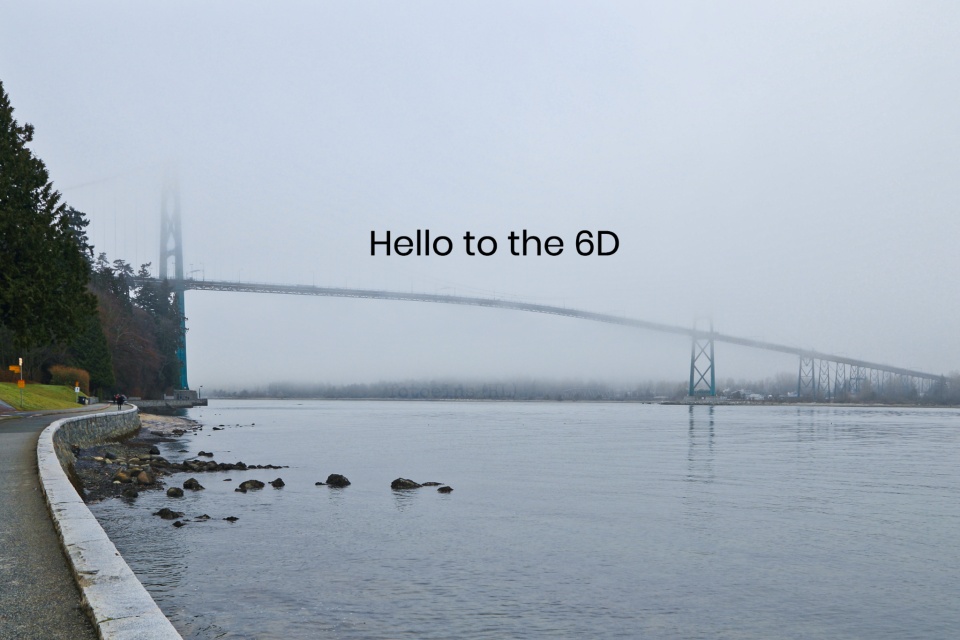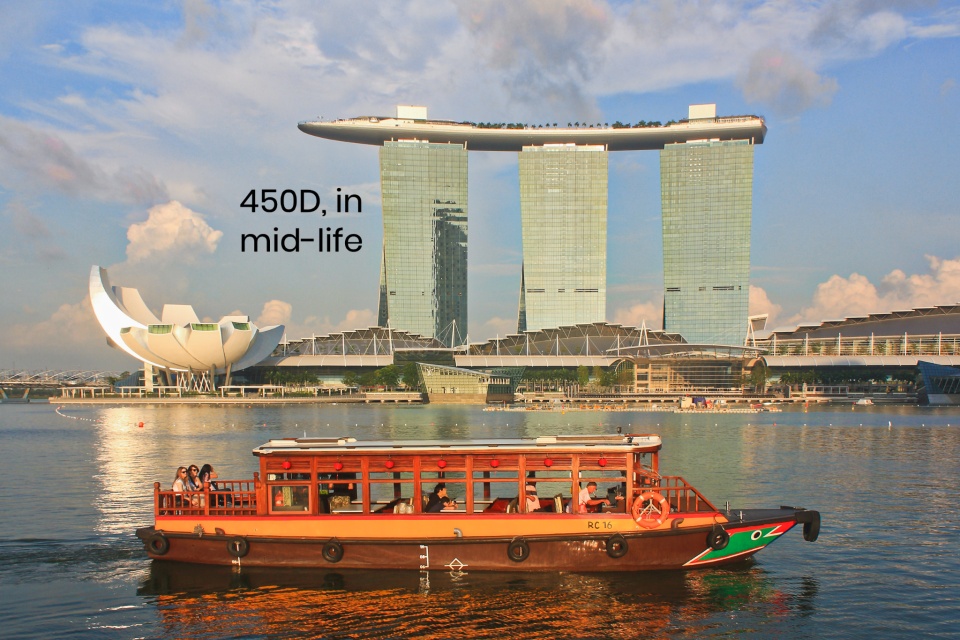Recently, I read an article written by Jim Richardson about what lenses one should bring with them on their holiday, vacation, or trip. His article brought into sharper focus about what I was going to do on my upcoming RTW (around the world) trip.
I’ve been using a Canon EOS 450D (Rebel XSi) digital-SLR camera body for the last three years, and it makes sense to continue “grinding away” with the reliable camera for the coming year. I thought about upgrading the camera body, but that got quashed when I realized I could wait (5D Mark 3, anyone?). Besides, the photos I’ve taken thus far have taught me that it comes down to lenses.
I’ve decided to bring all three lenses which I describe below.
Canon EF-S 18-55mm f/3.5-5.6 IS (II)
While light and a bit fragile with the “plastic” construction, this kit-lens (included with the camera body at purchase) provides a sufficiently wide field-of-view during photowalks to document what I’ve seen. The kit-lens has an effective focal-length range 29-88 mm with the 1.6-times crop-factor corresponding to the APS-C sensor on my camera. It shouldn’t surprise anyone that most of my photographs have been made with the kit-lens. The built-in image stabilization (IS) in the lens has allowed me to photograph a nighttime scene as long as 1/4-second, and sometimes 1/3-second without a tripod.
Here’s a review of the 18-55mm lens by DP Review.
ADDENDUM: On 2 Oct 2012, I replaced the four-year old kit-lens (whose auto-focus finally failed) with the latest version: namely, the Canon EF-S 18-55mm f/3.5-5.6 IS II.
Examples with the 18-55mm kit-lens:

One of the first photos made with my 450D : Waikoloa Beach, Hawaii – 2008 May 19

Setting of full-moon and Earth’s shadow: Gemini Observatory, Cerro Pachón, Chile – 2008 Sept 15

Sunset, southern summer solstice : La Serena, Chile – 2008 Dec 21
Canon EF 50mm f/1.4 USM
With the 1.6-times crop-factor, this prime-lens is effectively at 80mm focal length on my camera, which makes the lens more ideal as a portrait lens. However, I have also experimented using this lens as the “sole” walk-around lens. The field of view is smaller, and that forced me to do two things: (1) think carefully about what I wanted to photograph and how I wanted to get the shot, and (2) move my feet around to get the shot I wanted. What I love about this lens is the solid construction, low-light capability (to maximum f/1.4 aperture), and quality photographs I’ve been able to make. I’ve also used my “nifty-fifty” at times as the go-to night-time lens.
Here’s a review of the 50mm lens by DP Review.
Examples with the 50mm prime:

‘Hot coffee inside’ : outside Starbucks on Sendlinger Strasse, München – 1 Dec 2010

Snowflurries at Brandenburg Gate, Berlin – 24 Dec 2010

Prague from Vyšehrad – 1111, 1.1.11 (1111am, 2011 Jan 1). Air temp -1C, but felt like -11C
Canon EF 70-300mm f/4-5.6 IS USM
After I purchased the camera and kit-lens, it became very apparent a zoom-lens was required. I chose the 70-300mm, which on my camera’s sensor is effectively 112-480mm. This lens is obviously larger and heavier than the first two, because of all the glass required to get the zoom-range. For a tight zoomed-in shot, the lens performs very well and the subsequent picture quality is very good. Some have written that the optics may be L-like, and if true, the price for this non-L lens is worth every penny.
Here is a review of the 70-300mm zoom by Digital Picture.
Examples with the 70-300mm zoom:

Kohala Mountain Road (HI-250) towards Kawaihae, Big Island, Hawaii – 2009 Dec 7

BC Ferries (“Queen of Alberni”) to Tsawwassen (just outside of Vancouver), Canada – 2010 May 3

“THIS … is Sydney …” : Harbour Bridge from The Rocks – 2010 Sept 26
I’ve enjoyed these three lenses, which have produced a variety of photographs I want to make. After 23,000-plus exposures in almost four years (2011), I believe the camera still has a lot of life left and plenty of exposures remaining, and that my three lenses provide enough capabilities to continue uncovering a wealth of photographic surprises to come.
I’ve just added the 4th-generation iPod Touch to the arsenal. Making photos and video is convenient, stands out much less, and stays out of the way. I’m looking forward to learning about and doing more with iPhoneography.
The real point is that it doesn’t matter if you use an iPhone, a point-and-shoot camera, a digital SLR camera, a Canon, a Nikon, name-your-favourite-brand. Go out and discover for yourself the kinds of things or people or settings you like to photograph – go out and make those pictures!
I made all of the photos shown above. This post is published on Fotoeins Fotopress (fotoeins.com).
0.000000
0.000000
















